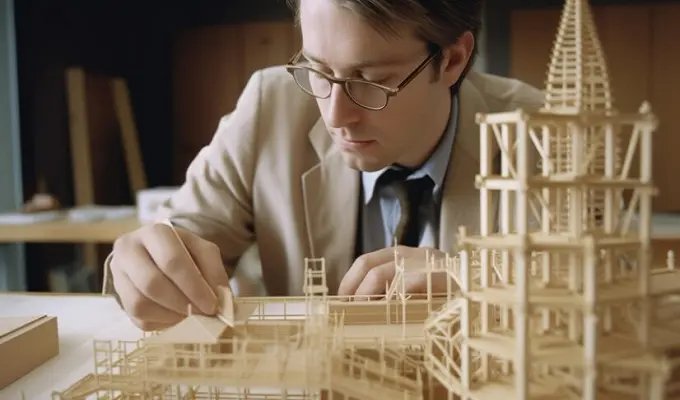
Ecclesiastical architecture refers to the design and construction of buildings used for religious purposes, such as churches, cathedrals, temples, mosques, and synagogues. Understanding the elements and evolution of ecclesiastical architecture provides insights into the history, culture, beliefs, and artistic achievements of civilizations across different eras. This article aims to give an overview of ecclesiastical architecture and introduce an interactive crossword puzzle to help readers learn and remember key terms and concepts. The crossword puzzle serves as an engaging study aid that reinforces learning in a fun way.
Understanding Element of Ecclesiastical Architecture Crossword
Ecclesiastical architecture encompasses the architectural designs of buildings used for religious activities. It emerged as early civilizations began constructing structures specifically for spiritual practices. Over centuries, ecclesiastical architecture evolved across different regions and religions, reflecting local customs, building materials, and artistic styles. The major periods in Western ecclesiastical architecture include Early Christian, Byzantine, Romanesque, Gothic, Renaissance, Baroque, and Modern.
Some common elements seen in ecclesiastical structures are a central nave, side aisles, apse, altar, domes, spires, arches, columns, and stained glass windows. These features carry symbolic significance and serve practical functions related to rituals, acoustics, lighting, and ambience. For instance, the nave facilitates processions, aisles accommodate devotees, apses house altars, domes represent heavens, and stained glass filters light.
Key Element of Ecclesiastical Architecture Crossword
Some key architectural elements found in churches and cathedrals include:
- Nave: The long, central space stretching from the entrance to the altar or apse. It is the primary gathering area for worshippers.
- Aisles: Narrower passages on the sides of the nave that separate it from adjacent spaces.
- Transept: The transverse space intersecting the nave, giving the church a cruciform (cross-shaped) plan.
- Apse: A semicircular or polygonal recess at the end of the nave housing the altar.
- Altar: The focal point for rituals located within the apse or chancel.
- Ambulatory: A passage enclosing the apse for circumambulation.
- Clerestory: Upper section of the nave wall containing windows that admit light.
- Vault: The arched ceiling over interior spaces.
- Dome: A hemispherical roof that crowns sacred spaces.
- Spire: A tall, pointed structure atop the church roof.
- Flying Buttress: An arched exterior support that transfers thrust of a vault or roof to a counterweight.
- Rose Window: A large, circular stained glass window.
- Gargoyle: A carved stone waterspout projecting from the roof.
Element of Ecclesiastical Architecture Crossword: An Interactive Learning Tool
Crossword puzzles offer an interactive way to learn terminology and test knowledge. Solving crossword clues related to ecclesiastical architecture elements provides a fun study exercise. The process of deducing answers based on provided clues helps reinforce concepts and improve retention.
This crossword puzzle quizzes readers on key architectural features of churches and cathedrals. It covers elements like the nave, apse, spire, rose window, gargoyles, and more. The clues describe identifiable characteristics and functions of each element. Solving the crossword by correctly matching clues to architectural terms provides a challenging yet engaging learning experience.
Using crosswords is an effective mnemonic device as the process encourages deeper processing and connections between clues and answers related to ecclesiastical architecture. The crossword format also adds an element of entertainment, making the learning process more enjoyable.
Walkthrough of the Ecclesiastical Architecture Crossword
This crossword puzzle has a straightforward square grid format with numbered clues. To solve the puzzle:
- Read each numbered clue carefully and try to think of potential answers based on your knowledge of ecclesiastical architecture elements.
- Pay attention to the number of boxes, as that indicates the letter count of the answer. Also note any filled boxes, which reveal some letters.
- Write your answer in the corresponding numbered boxes in the grid.
- Consult the across (horizontal) and down (vertical) clues to help fill intersecting answers.
- Use the revealed letters as hints to narrow down possibilities for unclear clues.
- If stuck, look for external resources on ecclesiastical architecture for help.
- Double-check the fit of all answers in the grid once completed.
With practice, solving the crossword will get easier. Use the clues and filled boxes strategically, and don’t hesitate to erase and retry if your answers don’t fit. Completing the puzzle correctly will validate your grasp of key ecclesiastical architecture terms.
Conclusion
Element of Ecclesiastical Architecture Crossword has evolved over centuries into a rich vocabulary of structural forms used in religious buildings. Learning the names and functions of various architectural elements develops a deeper appreciation of church design principles. The ecclesiastical architecture crossword puzzle provides an interactive study aid to reinforce this specialized terminology. Solving the crossword is an entertaining way to assess your knowledge while improving retention of key concepts. Whether an architecture enthusiast, student, historian, or theologian, do try your hand at this crossword to gain a well-rounded understanding of this fascinating domain.
